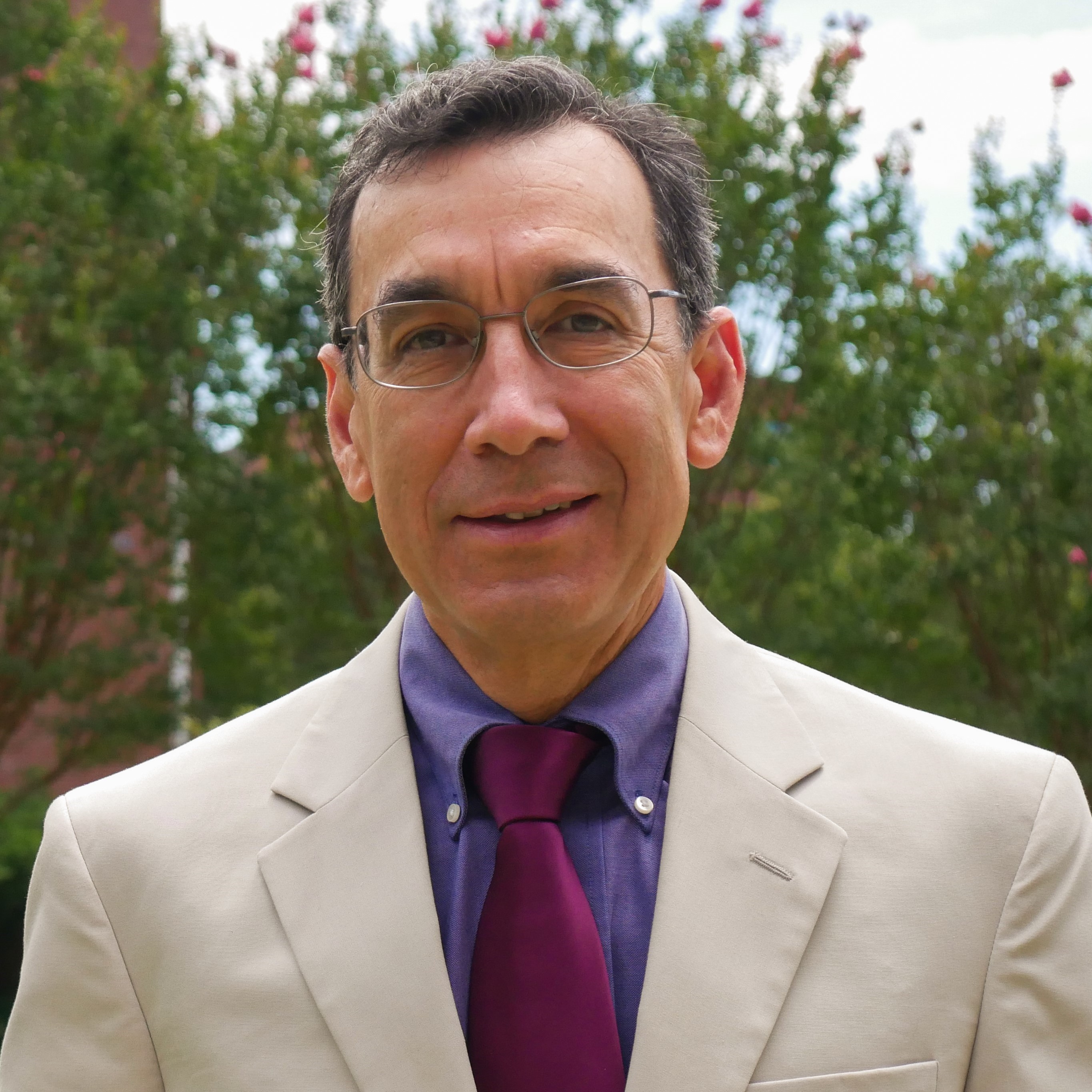
Department of Chemistry and Biochemistry
Professor Emeritus
Research Areas: Physical
Office: 119 Extension Hall
Address:
179 Chemistry Building
Auburn, AL 36849-5312
Phone: (334) 844-6998
Fax: (334) 844-6959
Email: ortiz@auburn.edu
Physical Chemistry: Molecular electronic structure theory
Quantum chemistry is the application of quantum mechanics to problems of molecular structure, energetics, properties and spectra. Computers and quantum theory often provide information on molecules and ions that complements experimental data. Advances in theory and computational technology have made quantum chemistry into an indispensable component of modern chemical research. For this reason, chemists with theoretical and computational skills now work in a variety of industrial, government, and academic settings.
Students in the Ortiz group learn the methods of quantum chemistry and acquire many computational skills. Close collaboration with senior members of the group and ample facilities enable new students to gain experience rapidly. Creativity is developed by encouraging independently formulated projects. Depending on the interests and talents of the student, dissertation research may emphasize any of the following areas.
- Applications of quantum chemistry to problems of structure, bonding and spectra
- Electron binding energies of DNA and RNA fragments: radiation damage and charge transport
- Double-Rydberg anions: new patterns of diffuse electronic distribution
- Solvated-electron precursors: Aufbau principles for diffuse electrons
- Cluster anions: fullerenes, boranes and carboranes
- Anion-molecule complexes: solvent effects on basicity
- Superhalogens and superalkalis
- Carbon cluster polyanions: principles of construction
- Metal-carbon clusters: principles of ligand binding
- Aluminum-oxygen clusters: models of oxide-metal interfaces
- Polysilanes: relationships between conformation and spectra
- Programming of improved algorithms
- Direct methods for large molecule calculations
- Symmetry adaptation
- Derivation of new theory
- Electron propagator theory of ionization energies and electron affinities
- Gradient techniques for adiabatic electron binding energies, vibrational structure in photoionization spectra
- Renormalized reference states for bond dissociation, biradicals, transition-metal complexes
- Higher operator manifolds for complex, shakeup processes in photoelectron spectra
- Dyson orbitals for photoionization intensities, electron scattering processes
- Dyson orbital analysis of ground state energies
- Analysis of effective electron density differences pertaining to ionization
- Two-electron propagator theory of electron-pair binding energies
- Double ionization energies and Auger spectra
- Double electron affinities and charge-inversion mass spectrometry
- Interpretation of Dyson geminals and electron correlation
- Polarization propagator theory of excitation energies and response properties
- Gradient techniques for the random phase approximation and its perturbative extensions
- Analysis of effective electron density differences pertaining to excitation
- Electron propagator theory of ionization energies and electron affinities
![Benzo[a]pyrene](http://www.auburn.edu/cosam/faculty/chemistry/ortiz/images/ortizfig.jpg)
Benzo[a]pyrene and the Feynman-Dyson amplitudes for its lowest ionization energy.
Díaz-Tinoco, M.; Ortiz, J. V. "Double Rydberg Anions with Solvated Ammonium Kernels: Electron Binding Energies and Dyson Orbitals", J. Chem. Phys. 2019, 151, 054301.
Díaz-Tinoco, M.; Corzo, H. H.; Ortiz, J. V. "Electron-Propagator Methods for Vertical Electron-Detachment Energies of Anions: Benchmarks and Case Studies", J. Chem. Theory Comp. 2018, 14, 5881.
Corzo, H. H.; Ortiz, J. V., "Electron Propagator Theory: Foundations and Predictions", Adv. Quantum Chem. 2017, 74, 267-98.
Ortiz, J.V. "Interpreting Bonding and Spectra with Correlated, One-Electron Concepts from Electron Propagator Theory", in Ann. Rev. Comput. Chem. 2017, 13, 139, D. A. Dixon, ed., Elsevier, United Kingdom.
Díaz-Tinoco, M.; Dolgounitcheva, O.; Zakrzewski, V. G.; Ortiz, J. V. "Composite Electron Propagator Methods for Calculating Ionization Energies", J. Chem. Phys. 2016, 144, 224110.
Last updated: 06/28/2023
